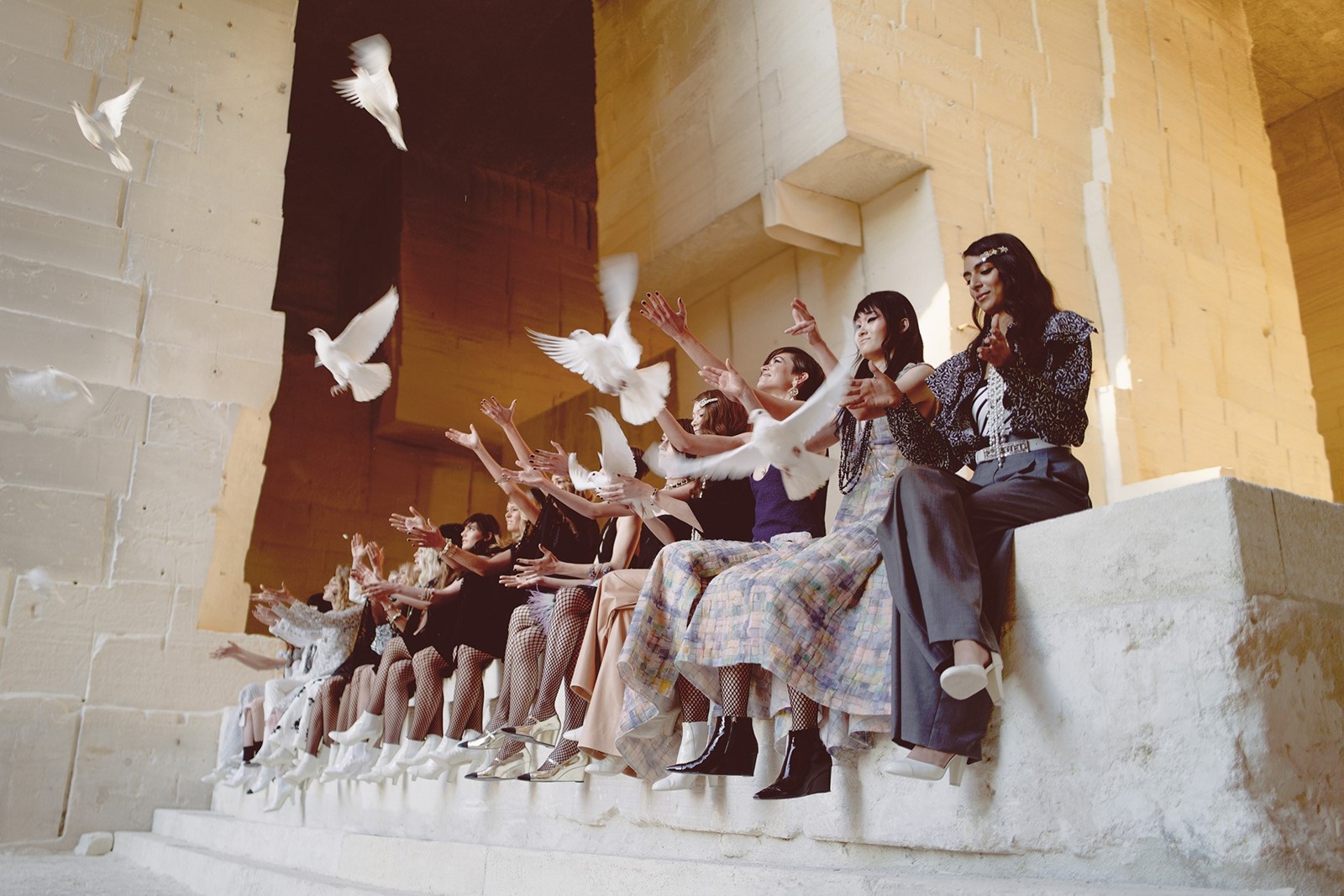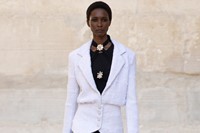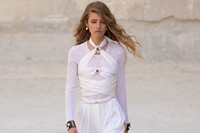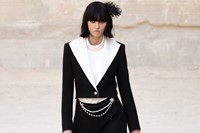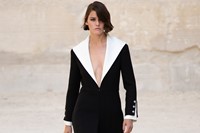In the glamorous whirl of Gabrielle Chanel’s legend, her life is often forgotten – that she was a poor orphan, brought up in the rustic simplicity of the French countryside, in a convent at Aubazines. Much of that legend, granted, was engineered by Chanel herself, to cloak the harsh realities of her past – but the aesthetics of her upbringing informed her clothes. The monastic simplicity of her little black dress, sometimes trimmed with white like nun’s habits, her love of beige – like the sandstone of the convent walls – of gold, and of precious glass jewels like stained glass windows, all come from her formative years. And the house that bears her name sent out gay floral bouquets, simply knotted like posies Chanel could have carried herself, to announce the launch of Virginie Viard’s latest Cruise 2022 offering.
The show was also staged away from Chanel’s modern, cosmopolitan home at the very heart of Paris: in the Carrières de Lumières – the ‘light quarries’ close to the Côte d’Azur. Carved from sandstone – Chanel beige, a colour she loved because it reminded her, perversely, of dirt – the space provided a graphic backdrop, ironically to a collection inspired by one of Gabrielle Chanel’s long-lasting and most Parisian relationships, namely her friendship with Jean Cocteau. Chanel provided costumes to his productions of Antigone, Orpheus, and Oedipus Rex in the 1920s: he, in turn, declared her “the finest dressmaker of the day.” Viard interwove Chanel’s loves with her own. “I love the film Testament of Orpheus,” Viard said. “In particular this magnificent scene: a man with a black horse’s head descends into the Carrières de Lumières, his silhouette cut out against the very white walls.” That vision, of black against white – quintessential Coco meets Cocteau – was the trigger for the collection, largely monochrome, often silhouetted dramatically against the expanse of rock.
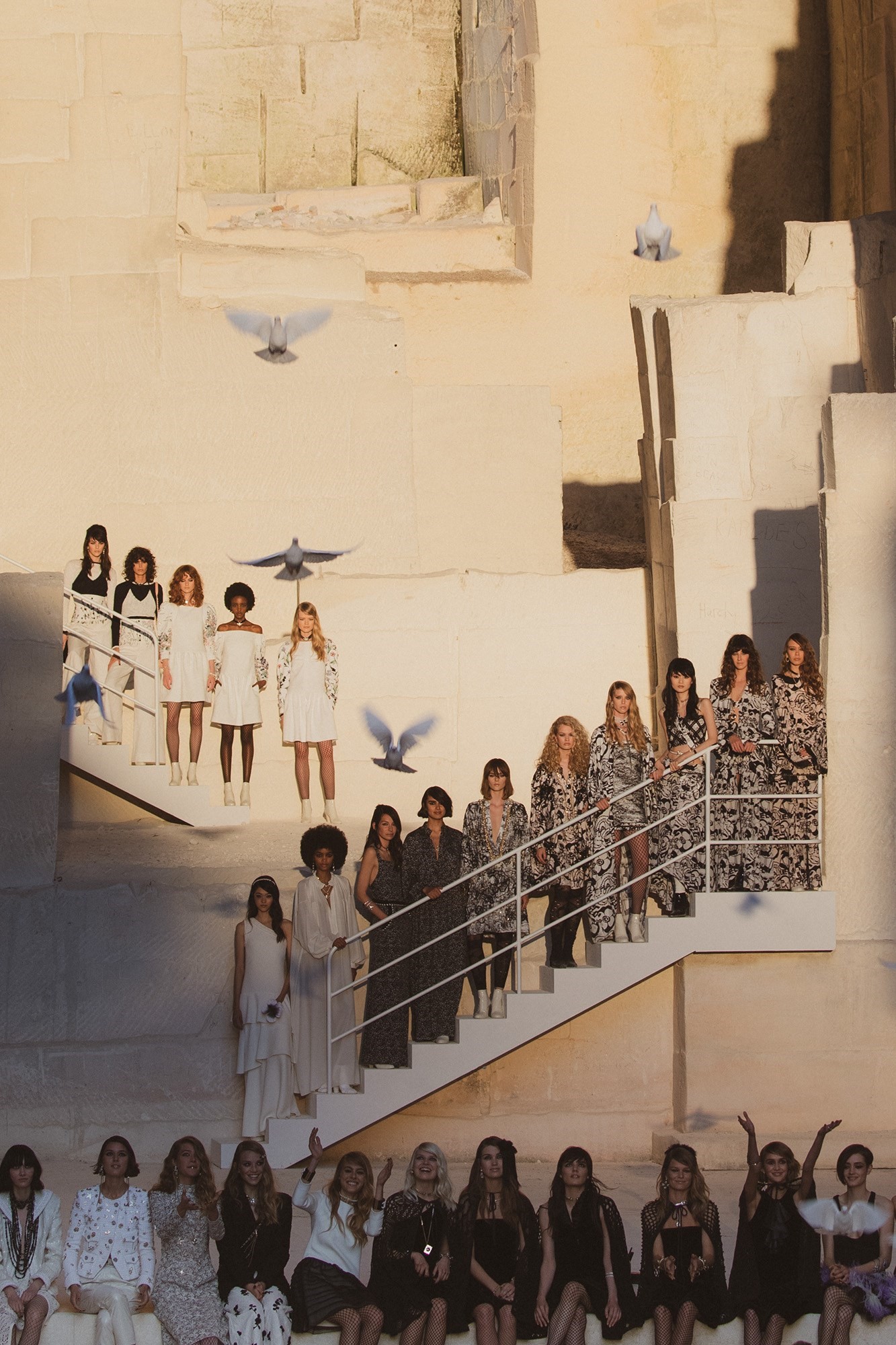
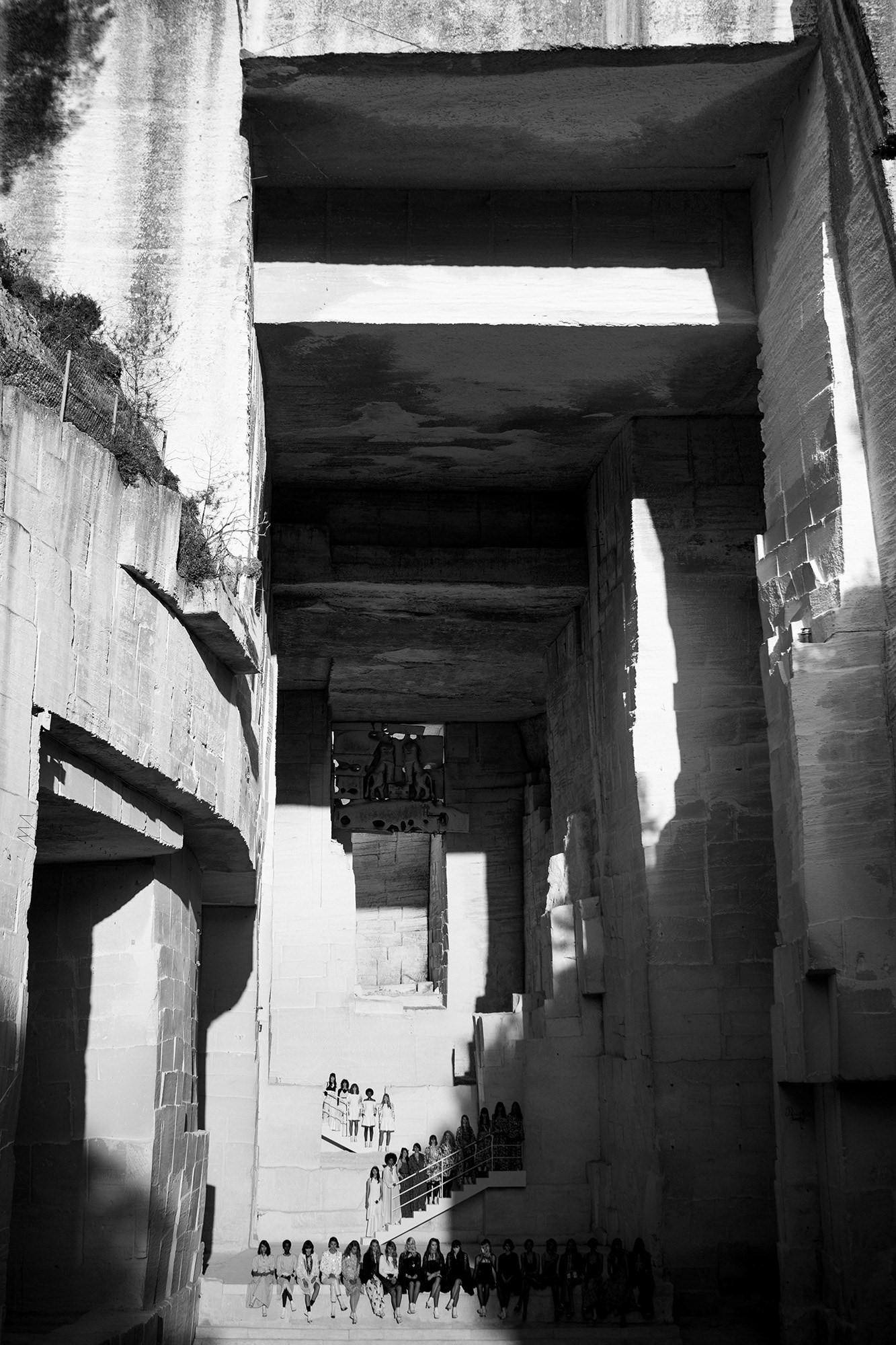
“I wanted something quite rock,” Viaird declared – although she meant the music, as opposed to a quarry. “Lots of fringes, in leather, beads and sequins, T-shirts bearing the face of the model Lola Nicon like a rock star, worn with tweed suits trimmed with wide braids, and pointed silver Mary Janes. A look that recalls as much the modernity of the 60s as that of punk.” Punk of course included fishnets, and frayed and torn edges (albeit in tweeds, artfully unravelled) and lots of black, the uniform colour of punk. But it was also the colour of Chanel – and wasn’t Gabrielle Chanel fundamentally, punk? Bear with me here – I don’t mean the punk of the safety-pin and shredded T-shirt variety, but of the nose-thumbing, rabble-rousing urge to overturn, to upend and to challenge, constantly. Chanel did that again and again – as Janet Flanner described in a New Yorker profile still unparallelled, “She has put the apache’s sweater into the Ritz, utilised the ditch-digger’s scarf, made chic the white collars and cuffs of the waitress, and put queens into mechanics’ tunics.” And of course, she deconstructed dress to within an inch of its life, dressing women – controversially – in the wool jersey normally only used for men’s undergarments, and dressing them in a colour normally only worn for mourning, that she reinvented to become emblematic of modernity.
Viard’s reiteration of Chanel was also modern: young, free, easy, focused on the dynamic energy of clothes for women in the street. Although the collection was filled with archival references – dresses printed with her symbolic lions, alongside her tweeds and pearls, interlocked Cs and quilted and chained handbags – and devoted to Chanel’s friendship with one of the greatest figures of French culture, it wore its history lightly.
